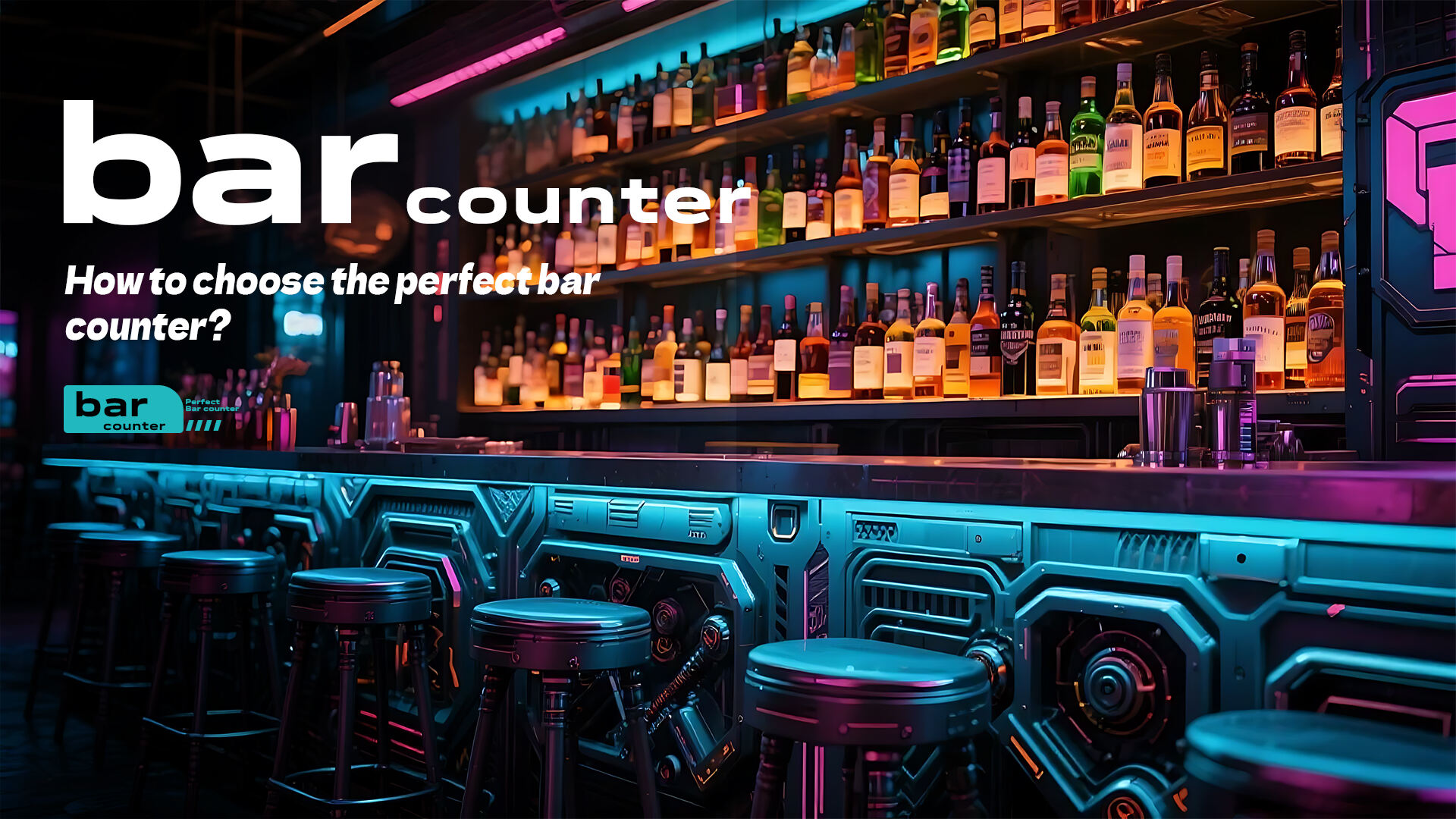Selecting the ideal bar counter for your space—whether it’s a home entertainment area, a restaurant, or a commercial bar—requires balancing aesthetics, functionality, and durability. As a leading manufacturer of decorative and functional furnishings, Nanning Aisy Import And Export Co., Ltd. understands the nuances of crafting spaces that resonate with style and practicality. This guide will walk you through critical considerations to ensure your bar counter becomes a centerpiece of sophistication and efficiency.
1. Define Your Purpose and Space Constraints
Before diving into design options, clarify the primary role of your bar counter. Will it serve as a casual spot for family gatherings, a high-traffic area in a bustling bar, or a hybrid space for dining and socializing? This decision influences size, material, and layout.
- Space Analysis: Measure the available area, accounting for seating, traffic flow, and storage needs. A compact counter might suffice for a home bar, while commercial venues may require L-shaped or modular designs to maximize capacity.
- Ergonomics: Ensure the counter height (typically 40–42 inches) and depth (24–30 inches) align with user comfort. Adjustable stools or integrated footrests can enhance accessibility.
2. Material Matters: Durability Meets Design
The material you choose impacts longevity, maintenance, and visual appeal. Consider these popular options:
- Solid Wood: Timeless and warm, wood suits rustic or traditional themes. Opt for hardwoods like oak or walnut for durability, or engineered wood for cost efficiency. Sealants protect against spills and scratches.
- Laminate: Budget-friendly and low-maintenance, laminate offers endless color and pattern choices. It’s ideal for high-traffic areas but may lack the premium feel of natural materials.
- Stone/Quartz: Granite or quartz counters exude luxury and resist heat and stains. However, they require professional installation and periodic sealing.
- Metal: Stainless steel or brushed aluminum counters are sleek and hygienic, perfect for modern or industrial settings. Pair them with wood or stone for contrast.
- Fiberglass & Custom Crafts: For unique designs, explore fiberglass or metal crafts, a specialty of Nanning Aisy. These materials allow intricate shapes and finishes, from retro booth-style counters to avant-garde sculptures.
3. Style Synchronization: Align with Your Aesthetic
Your bar counter should harmonize with existing decor. Consider these themes:
- Modern Minimalism: Clean lines, neutral tones, and integrated lighting create a sophisticated vibe.
- Rustic Charm: Reclaimed wood, distressed finishes, and earthy hues evoke a cozy, farmhouse feel.
- Industrial Edge: Exposed metal, concrete accents, and open shelving suit urban lofts or breweries.
- Glamorous Elegance: Marble tops, gold fixtures, and mirrored surfaces add opulence to upscale venues.
4. Functional Add-Ons: Enhance Usability
Incorporate practical features to elevate the user experience:
- Built-In Storage: Drawers, shelves, or wine racks keep essentials organized and within reach.
- Lighting: Under-counter LED strips or pendant lights highlight the bar’s focal point while improving visibility.
- Electrical Outlets: USB ports or charging stations cater to tech-savvy patrons.
- Customization: Work with manufacturers like Nanning Aisy to design bespoke elements, such as branded logos or thematic decorations (e.g., Christmas-themed counters for holiday venues).
5. Budget and Quality Balance
While cost is a factor, prioritize quality to avoid premature replacements. A well-crafted counter is an investment that pays dividends in durability and customer satisfaction. Compare quotes from reputable suppliers, ensuring transparency about materials, warranties, and delivery timelines.
6. Cultural and Regional Considerations
Global buyers should account for local preferences:
- Climate Resilience: In humid regions, opt for moisture-resistant materials like stainless steel or treated wood.
- Cultural Symbolism: Colors and designs may carry specific meanings. For example, red symbolizes luck in many Asian cultures, making it a popular choice for festive venues.
- Regulatory Compliance: Ensure the counter meets safety standards for public spaces, such as fire resistance or ADA accessibility.
Final Thoughts: Partner with Experts
Choosing the perfect bar counter is a collaborative process. At Nanning Aisy Import And Export Co., Ltd., we combine decades of expertise in crafting high-quality decorations and furnishings with a customer-centric approach. From material selection to export logistics, our team ensures a seamless experience tailored to your unique needs.
By prioritizing purpose, material, style, and functionality, you’ll create a bar counter that not only meets practical demands but also becomes a testament to your brand’s identity. Let’s collaborate to turn your vision into reality—because great spaces are built on attention to detail.

